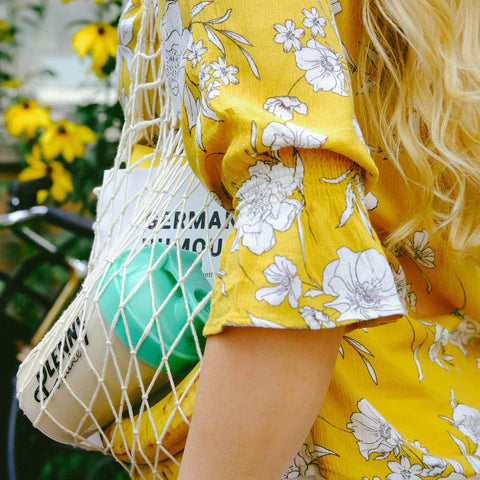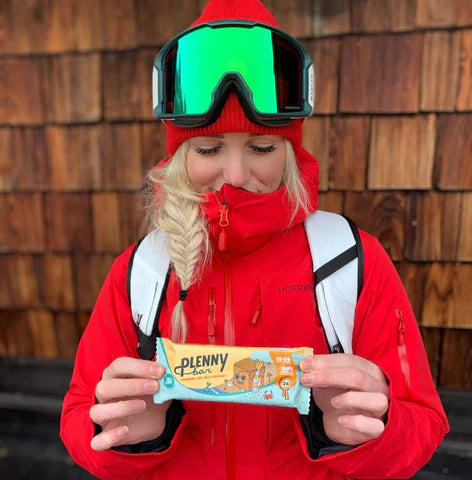Updated on 31/10/2023
What is Diabetes?
Diabetes mellitus is a group of metabolic diseases characterised by a high blood sugar level over a prolonged period of time [1].
It’s a disease that prevents your body from properly using the energy from the food you eat. Your body is made up of trillions of cells. To produce energy, the cells need food in a straightforward form.

For example, when you eat or drink, mostly carbohydrates in your food are broken down into a simple sugar called glucose. Glucose provides the energy your body needs for daily activities. Imagine it like this: the blood vessels and blood are a sort of highways that transport sugar. Sugar cannot go into the cells by itself.
Why not?
Because it needs to be “invited” into the cell. The pancreas naturally produces insulin once it senses that you are eating. Insulin is immediately released into the blood, which acts as the "key" that opens the door for sugar to enter the cells, which would be used for energy. When sugar leaves the bloodstream and enters the cells, the blood sugar level is lowered.

Without insulin (this “key"), sugar cannot get into the body's cells for use as energy, which causes blood sugar levels to stay high.
So, simply said, Diabetes Mellitus is a disease that occurs when your blood glucose is too high due to problems with the hormone insulin [2].
What's the Difference Between Type 1 and Type 2 Diabetes?
The American Diabetes Association (ADA) classified diabetes into two broad categories: type 1, type 2 and other types [1].

Type 1 Diabetes
In type 1 diabetes, the pancreas makes little or no insulin, so sugar cannot get into the body's cells for use as energy. People with type 1 diabetes must use insulin injections to control their blood glucose. Approximately 5-10% of people with diabetes are diagnosed with type 1.
Type 2 Diabetes
In type 2 diabetes, the pancreas produces insulin, but the problem is twofold. It may not produce enough, or the cells become insulin resistant. Insulin resistance means that tissues, such as muscles and the liver, don’t respond well to insulin. As a result, the cells can’t take the glucose from the bloodstream for it to be used as energy. 9 out of 10 people with diabetes have type 2, which is often accompanied by other conditions such as hypertension and overweight. Type 2 diabetes is preventable. It can be controlled and sometimes even reversed with a combination of diet, weight management and exercise. However, treatment may also include glucose-lowering medications or insulin injections. [2] [3]
Prediabetes
Prediabetes is a condition where you have a higher-than-normal blood sugar level. It's not high enough to be considered type 2 diabetes yet, but without lifestyle changes, pre-diabetics are more likely to develop type 2 diabetes. Eating healthy foods, making physical activity as part of your daily routine and maintaining a healthy weight can help bring one’s blood sugar levels back to normal [4] [5].
What Is a Diabetes Diet?
If you have diabetes or prediabetes, your doctor will likely recommend that you see a dietitian to help you develop or maintain a healthy eating plan. This will help you control your blood sugar (glucose).
Usually, a diabetes diet is a meal plan that's naturally rich in nutrients and fibre, low in fat and calories. Actually, a diabetes diet is a great eating plan for almost everyone since key elements are fruits, vegetables and whole grains. The diet is based on eating three meals a day at regular times. This helps to better use the insulin that your body produces or gets through medication.
There are different approaches to creating a diabetes meal plan. The ADA recommends an individualized nutritional approach which promotes nutrient-dense foods through controlled portion sizes. For this, the ADA came up with the 'plate method’ which is a simple method of meal planning. In essence, it focuses on eating more vegetables. According to the ADA, you can follow these steps when preparing your plate:
- Fill half of your plate with non-starchy vegetables, such as peppers, greens, carrots and tomatoes.
- Fill a quarter of your plate with a protein, such as beans, lentils, tofu, tempeh, edamame or plant-based meat substitutes.
- Fill the last quarter with carbohydrates, such as brown rice, quinoa, or a starchy vegetable, such as green peas, sweet potato and pumpkins. Also fruits are included in this section.
- Include "good" fats such as nuts or avocados in small amounts.
- Drink water or unsweetened tea or coffee.

Other ways to help you keep your blood glucose level within a normal range are to count carbohydrates or to rank carbohydrate-containing foods based on their effect on blood glucose levels (aka the glycemic index). The lower the glycemic index of foods, the lower their impact on blood glucose. There’s also a possibility that a dietitian recommends you choose specific foods to help you plan your meals and snacks. In this case, you can choose foods from a list including categories such as carbohydrates, proteins and fats. It is recommended to either eliminate alcohol or consume it in moderation. Additionally, given that salt consumption is linked to hypertension, it is advisable to keep your salt intake lower than 5.75 g/day (or 2300mg of sodium). [8].
Carbohydrates
The diet always includes fibre-rich complex carbohydrates, which can be found in whole wheat, oatmeal and beans. Complex carbohydrates take longer to digest and are a more stable source of energy than simple carbohydrates. Because carbohydrates break down into glucose, they have the greatest impact on blood glucose levels. To help control the blood sugar, it is advised to calculate the number of carbohydrates you are eating so that you can adjust the dose of insulin accordingly. Fibre (a carbohydrate) plays an important role in controlling blood sugar levels. Foods rich in fibre include vegetables, fruits, nuts, legumes and whole grains [7] [9].
Fatty Acids
Foods containing monounsaturated and polyunsaturated fats, like Omega-3 fatty acids, can help lower cholesterol levels. Avocados, nuts and olive oil are good sources of these fatty acids [8] [9]. For further information about mono and polyunsaturated fats, check out this blog.
Protein
Some research has found successful management of type 2 diabetes with meal plans including slightly higher levels of protein (20–30%), which may contribute to increased satiety. However, different studies suggest that protein should be a supplement to vegetables, fruits and whole grains in a meal, not the entire meal. Multiple studies have found that a plant-based diet can control blood sugar levels to a greater extent than a traditional diabetes diet which limited calories and carbohydrates. Plant-based protein can be found in soy, brown rice, quinoa, pea, buckwheat, bulgur, nuts, legumes and seeds [9] [10] [11].
Diabetes and Weight Loss
Research has shown that weight loss is the primary medical aim for diabetic patients with type 2 form of diabetes.
By reducing weight, especially from the abdominal area, insulin sensitivity will improve along with blood glucose control and thus reduce the risk of complications.

Meal shakes like our Plenny Shake can be used to manage your weight. Controlling your calorie intake is a powerful tool for weight loss, helping you achieve your goals with greater ease and precision.
Read more practical tips in our Complete Guide to Fat Loss.
What Is the Best Meal Shake for Diabetics?
The combination of complex carbohydrates like the dietary fibre inulin, protein and fatty acids creates an optimally balanced meal replacement. This can be easily incorporated into a healthy and varied diet rich in fresh produce.
Hooray! All Plenny meals include slow-releasing (complex) carbohydrates that include starches and fibres which can be found in ingredients like oatmeal, flaxseeds, inulin and soy. These complex carbs help to control blood sugar levels thanks to their fibre content.
Moreover, the Plenny Shakes, Plenny Drink, Plenny Bar and Plenny Pot are sources of omega 3 fatty acids that help lower cholesterol levels.
Jimmy Joy is a great tool for people living with (pre) diabetes. One bar, a shake or a drink equals one optimally formulated nutritious meal.
One Plenny Shake Active meal (98g) that will keep you full for hours has:
- 400 calories (remember, it’s a meal shake)
- 35g protein
- 32g total carbs, of which 3,8,g sugar
- 13g fat, of which 1,7g saturated fat
- 6,7g fibre
Taking a proactive approach to your health is essential. If you notice clear signs or symptoms of type 1 or 2 diabetes, or if you have diabetes risk factors, consult your doctor for further guidance and appropriate screening.
Reviews Jimmy Joy and Diabetes

Sources
[1] Kharroubi AT, Darwish HM. Diabetes mellitus: the Epidemic of the Century. World Journal of Diabetes [Internet]. 2015 Jun 25 [cited 2023 Oct 30];6(6):850. Available from: https://www.ncbi.nlm.nih.gov/pmc/articles/PMC4478580/
[2] Cleveland Clinic. Diabetes [Internet]. Cleveland Clinic. 2023 [cited 2023 Oct 30]. Available from: https://my.clevelandclinic.org/health/diseases/7104-diabetes-mellitus-an-overview
[3] Diabetes [Internet]. www.who.int. [cited 2023 Oct 30]. Available from: https://www.who.int/europe/news-room/fact-sheets/item/diabetes
[4] Mayo Clinic. Prediabetes - Symptoms and causes [Internet]. Mayo Clinic. 2022 [cited 2023 Oct 30]. Available from: https://www.mayoclinic.org/diseases-conditions/prediabetes/symptoms-causes/syc-20355278
[5] National Institute of Diabetes and Digestive and Kidney Diseases. Insulin Resistance & Prediabetes | NIDDK [Internet]. National Institute of Diabetes and Digestive and Kidney Diseases. 2018 [cited 2023 Oct 30]. Available from: https://www.niddk.nih.gov/health-information/diabetes/overview/what-is-diabetes/prediabetes-insulin-resistance
[6] Amidor T. Create-Your-Plate: Simplify Meal Planning with the Plate Method [Internet]. Diabetes Food Hub. 2020 [cited 2023 Oct 30]. Available from: https://www.diabetesfoodhub.org/articles/create-your-plate-simplify-meal-planning-with-the-plate-method.html
[7] Zacharias E. Complex Carbohydrates and Dietary Fiber [Internet]. Boulder Medical Center. 2015 [cited 2023 Oct 30]. Available from: https://www.bouldermedicalcenter.com/complex-carbohydrates-and-dietary-fiber/
[8] Mayo Clinic. Diabetes diet: Create your healthy-eating plan [Internet]. Mayo Clinic. 2023 [cited 2023 Oct 30]. Available from: https://www.mayoclinic.org/diseases-conditions/diabetes/in-depth/diabetes-diet/art-20044295
[9] Gray A, Threlkeld RJ. Nutritional Recommendations for Individuals with Diabetes [Internet]. Nih.gov. MDText.com, Inc.; 2019 [cited 2023 Oct 30]. Available from: https://www.ncbi.nlm.nih.gov/books/NBK279012/
ce
[10] Yokoyama Y, Barnard ND, Levin SM, Watanabe M. Vegetarian diets and glycemic control in diabetes: a systematic review and meta-analysis. Cardiovascular diagnosis and therapy [Internet]. 2014;4(5):373–82. Available from: https://www.ncbi.nlm.nih.gov/pmc/articles/PMC4221319/
[11] Aljabali A, Maghrabi R, Shok A, Alshawmali G, Alqahtani A, Alsinan Z, et al. Plant-based diet and risk of type 2 diabetes mellitus: A systematic review and meta-analysis. International Journal of Medicine in Developing Countries. 2020;1301–6. doi:10.24911/ijmdc.51-1592898007
[12] Taylor R. Calorie restriction for long-term remission of type 2 diabetes. Clinical Medicine. 2019 Jan;19(1):37.





















 Product added to cart
Product added to cart














